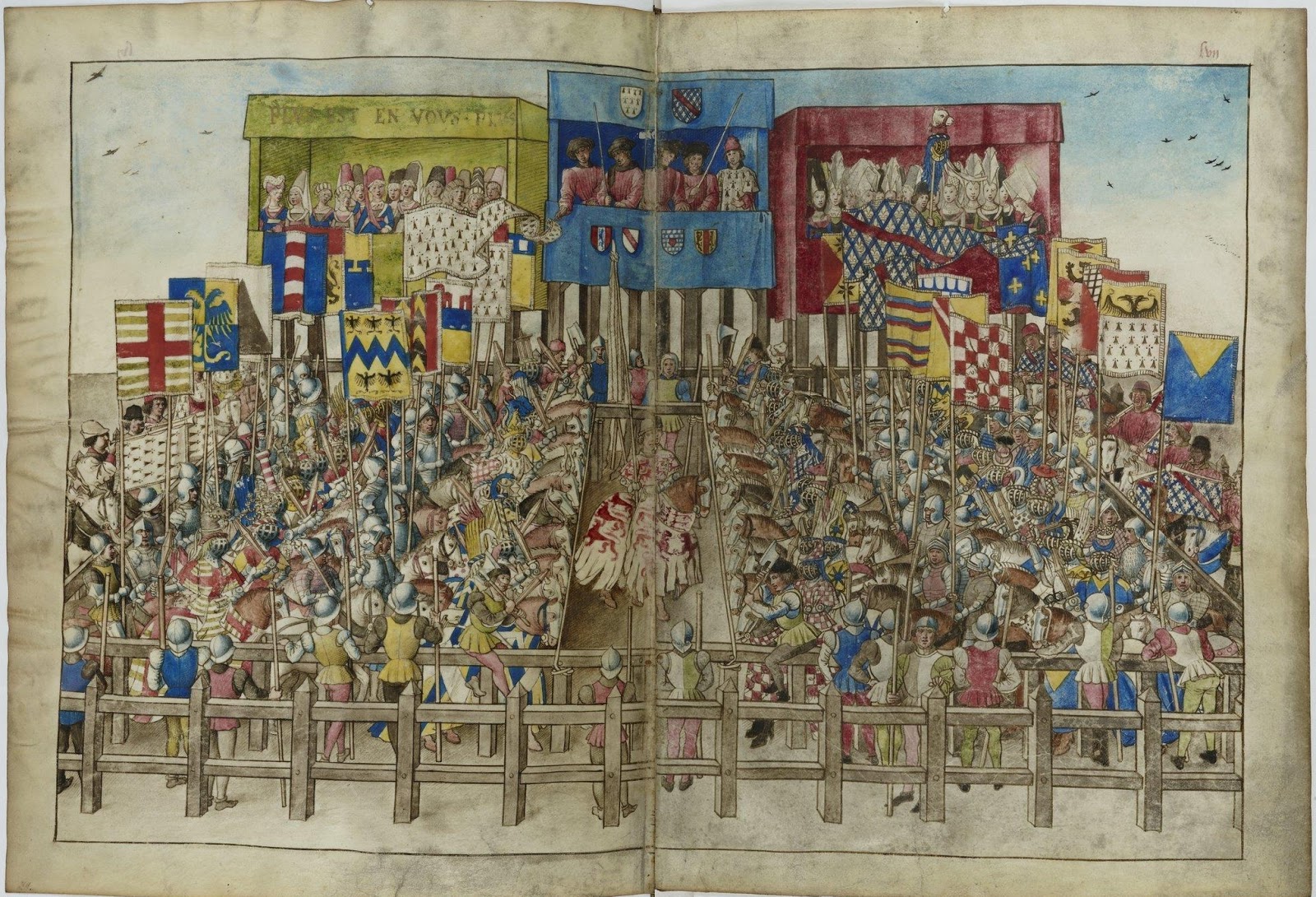Anonymous: King René's Tournament Book (1480-1488)
(Bibliothèque Nationale de France, Paris, France)
- the duke of Brittany gives a sword (a symbol of a challenge) to his king of arms, to be given to the duke of Bourbon.
- The duke of Bourbon accepts the challenge and four judges are appointed to select the time and place for the tournament
- heralds announce the tournament and invite other nobles to join.
- the tournament begins with a solemn entry of the judges, heralds, kings of arms and the attendees in the city which is organizing the tournament.
- that night a banquet is held for all the attendees
- on the second day, all the coat of arms of the attendees are displayed (in a local monastry of castle). These are inspected by the judges and ladies. Knights who display bad behavior are removed form the tournament. another banquet is held that night.
- on the third day an honorary knight is selected. His job is to halt the fighting if it becomes too brutal and may invoke the protection of a lady to a specific knight - after that this knight may no longer be attacked. All the attendees then swear that they will fight with honor. The day is closed with another banquet
- On the fourth day the actual tournament is held (shown here): a large melee. After the fight, the judges allocate their points and all the attendees parade through the city. That night the winner is announced who is given a price (usually a jewel) from the honorary knight and the ladies.
Page from 1480-1488.
